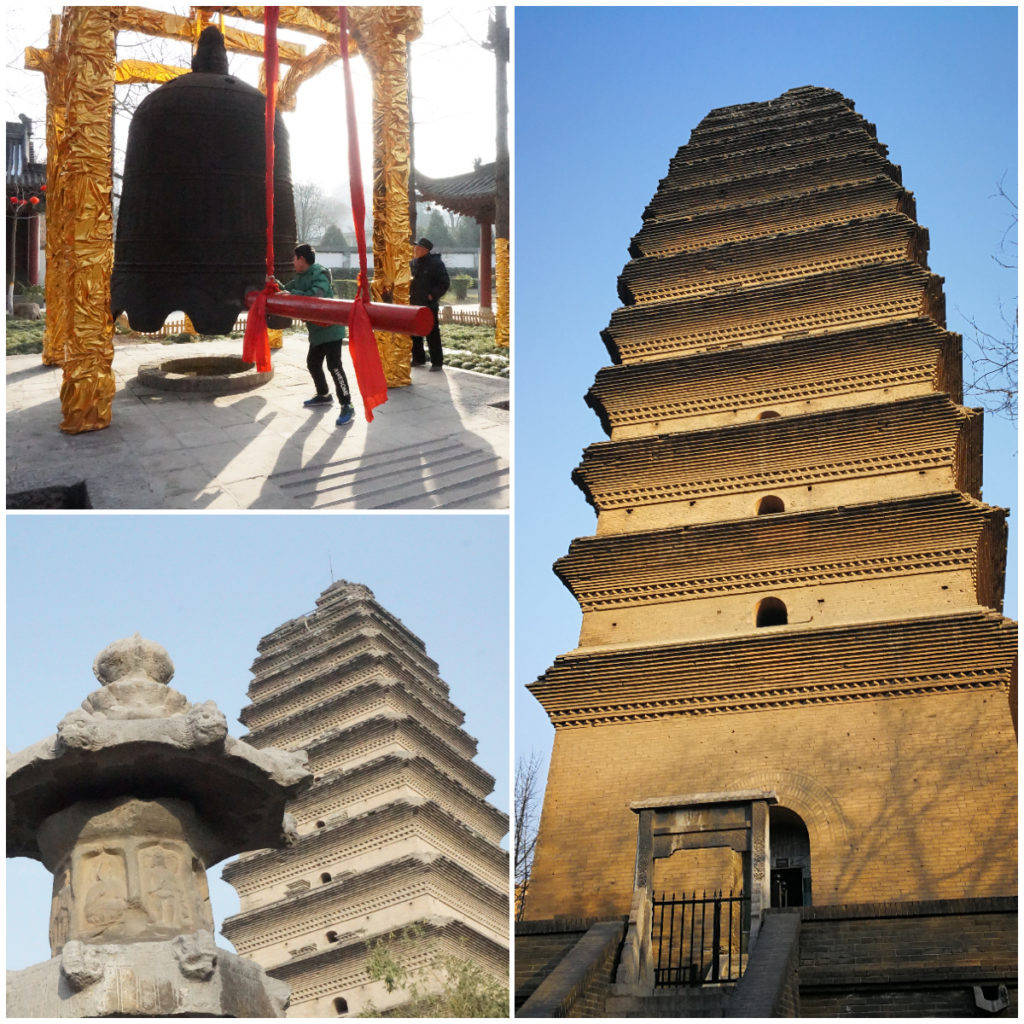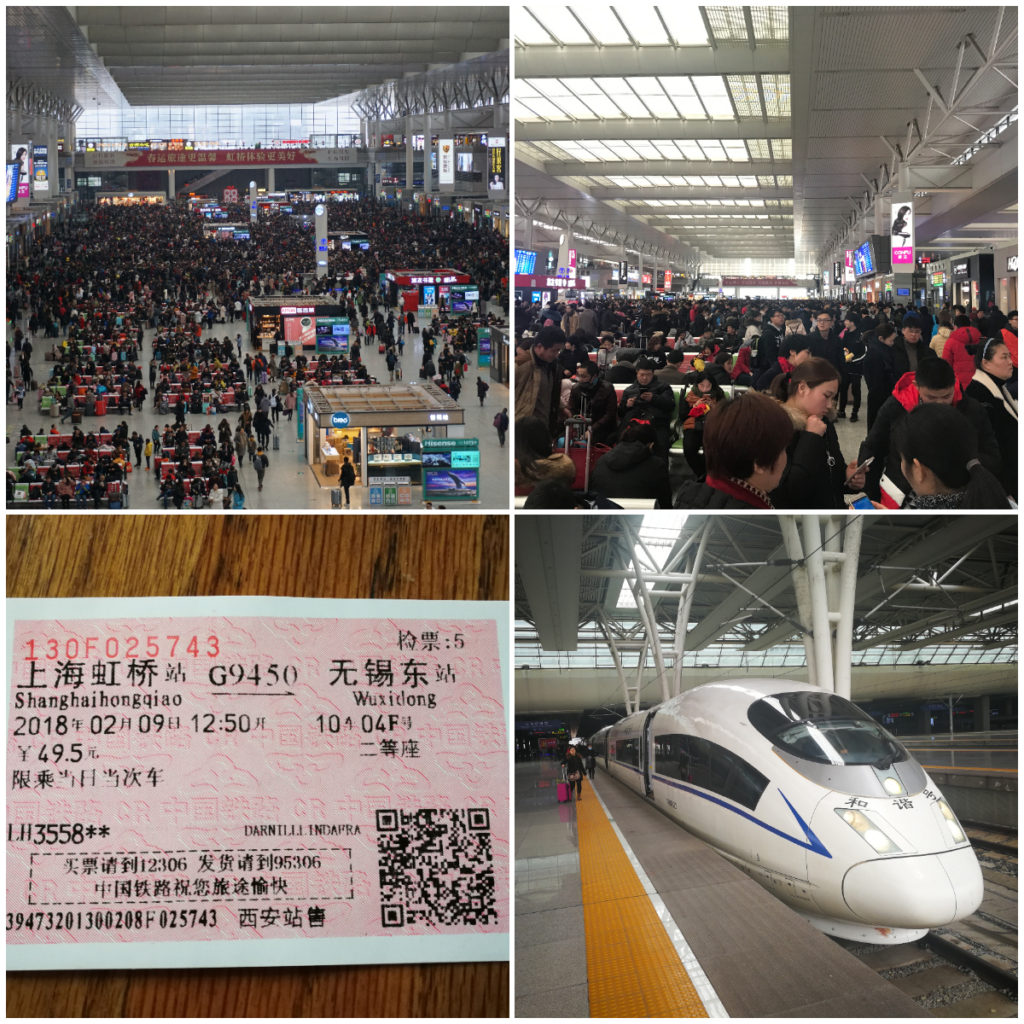We had covered off the ‘big ticket items’ we wanted to see in China. The Great Wall and the Terracotta Warriors was the major drawcard for choosing this tour. There were many other wonderful sites we saw on the way. Here is a roundup of the rest of the highlights.
Sacred Way
Located on the outskirts of Beijing, The Sacred Way is the main road leading to all the tombs in this area (Ming Tombs).
The road is 7 km long with a huge stone memorial arch (Great Red Gate). The stone arches were built in 1540 A.C.
We walked along a portion of this road which is lined with stone statues. These consisted of 12 human figures and 24 animals. These included lions, camels, elephants, unicorns, dragons, tortoise and horses. There were 4 of each of these animals, two squatting and two standing. The line up seemed to go on forever.
It must have been a massive task to build way back then but it was a very important part of their beliefs. Leading to most tombs is a Sacred Way (or Divine Road) which means ‘road leading to heaven’. This was built as a pathway for the Emperor who would be able to enter heaven through this road.
While it was a freezing day, we had a clear blue sky day. It was peaceful and serene with not many tourists. I could see how they would believe this could be the divine road to heaven.
Xi’an Ancient City Wall
Xi’an City Wall is the most intact city wall that has survived in all of China. It is also one of the largest ancient military defence systems in the world.
We were fascinated and somewhat surprised when we visited this impressive historical site.
It dates as far back as the 14th century to fortify the city and took 4 years to complete. This massive structure stands 12 metres high and the walls are 18 metres thick at the bottom. It covers 25 km in a square shape with a deep moat surrounding it. The wall encloses an area of 36 square km.
After entering from the south gate we stood in the large courtyard. Just imagine the activities that would have taken place on that very spot throughout the hundreds of years.
We easily climbed the stairs to stand on the top of the wall. Our tour guide gave us the option of going for a walk along the roadway or hire ourselves a bicycle and cycle as much of the wall as we could in the half-hour time slot we had. Us and another couple jumped at the chance of a cycle ride and spent a very pleasant half hour riding the top of the City Wall. It was a bit bumpy and hard on the backside as the pathway was cobblestones! It was also a great way to see the old city.
Small Wild Goose Pagoda
This pagoda was different to many that we have seen before throughout Asia and SE Asia.
It was built of blue bricks and originally had 15 storeys and reached an impressive 45 metres in height. It is believed to be built in 652 and further restored in 704. Unfortunately, mother nature has not been kind to the structure. Because of numerous violent storms and earthquakes, the two upper storeys were destroyed.
There was a massive earthquake in 1487 which split the pagoda right up the middle. The gap was up to 1/2 a metre. Strangely, another earthquake in 1521 forced both sides back together and the crack disappeared. It appears that the craftsmen built its foundations on rammed earth. This distributes pressure evenly during earthquakes. This enabled the pagoda to be flexible enough to withstand storms and earthquakes. Go figure that fact. Did they do that on purpose or was it a fluke?
End of Tour in Shanghai
After our stay in Xi’an, we flew to Shanghai with our tour group. This was to be our last night with the group as we were on a tight timeframe to get to our House Sitting assignment in Wuxi (1.10hr Bullet Train from Shanghai). This meant that we missed out on the day’s sightseeing in Shanghai. This will have to wait for our next trip to China we decided.
We Were on Our Own
Our tour company, China Travel Guide had booked our train tickets from Shanghai to Wuxi. We were lucky to get a couple of seats as this was during the build up Chinese New Year. It turns absolutely chaotic as the general population tries to make their way back to their families.
They communicated all the instructions thoroughly and recommended travel times to the station from our hotel.
We were a little apprehensive as our experiences in other places in China indicated to us that it isn’t all that easy to find your way around as nothing is in English. There are very few people around who will understand or choose not to understand English either.
Shanghai Hongqiao Station
Shanghai is a major railway network hub. The city has four railway stations and we needed to make our way to Shanghai Hongqiao Station. With a total area of 1.3 million square meters, it is the largest railway station in Asia! I can honestly say that I think that every single square metre was taken up by people. We both had a sharp intake of breath when we looked down at a sea of people.
The station has 16 different platforms, most of which are high-speed-rail and guess what? Our paper tickets were only in Chinese! I managed to find a couple of young-looking staff members and prayed that they knew at least a little English. I was in luck as they read our tickets and pointed us in the right direction of our platform.
We made sure we were in line nice and early at our designated gate and we were soon seated on the correct train, going in the correct direction to our destination……we hoped! After all, we did have a dog called Sweetie and a 17-year-old cat called Dr Poppy waiting for our arrival in Wuxi.
Summary of Our Tour
As I have mentioned in a previous blog, we don’t do guided tours. We are independent travellers and that is the way we like to experience a country – along with the trials and tribulations that go with it.
China is different though than a lot of the countries we have travelled to.
Pro’s
- everything was organised for us, we didn’t have to plan anything
- all entrances were included along with all our breakfasts and some lunches
- we avoided extraordinarily long queues at some of the venues
- we learnt all about the history of where we were visiting and we didn’t have to study up beforehand
- the accommodation was at a level that we were not used to and made a pleasant change
- it gave us the opportunity to socialise with other travellers, it’s always just the two of us
Con’s
- we were travelling on a timeframe so there were some places we would have liked to spend longer at
- obviously, it cost us more than it would have if we were independently travelling
More blogs on China to come. Click on the link below to view a video on the highlights.





